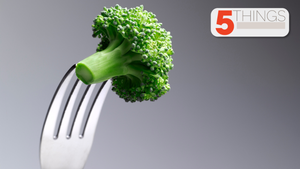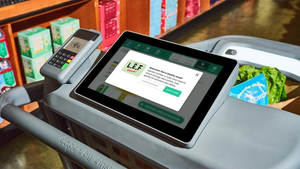Safeway’s Strategy Behind Open Nature
It’s interesting to observe how retailers are approaching health and wellness and craft it to their best advantage. After all, it’s a business and it’s important to stand out from your competition: Wal-Mart, forever the butt of jokes about the class of ...
January 29, 2011
It’s interesting to observe how retailers are approaching health and wellness and craft it to their best advantage. After all, it’s a business and it’s important to stand out from your competition: Wal-Mart, forever the butt of jokes about the class of shoppers who go there, has teamed up with First Lady Michelle Obama’s anti-obesity campaign; Whole Foods has turned “four pillars” of healthy eating into Health Starts Here, the ambitious program that casts the retailer as educator and resource, not just a purveyor; or Hy-Vee, the Midwest stalwart that leads the industry with its staff of more than 100 store dietitians, who make wellness accessible to conventional shoppers.
 And then there’s Safeway. The Pleasanton, Calif.-based chain has steadily been building its wellness platform, first through store redesigns and then private labels. It was in April 2005 that the retailer launched its Lifestyle format, with its “Ingredients for Life” slogan and updated store layouts that emphasize fresh foods and nutrition.
And then there’s Safeway. The Pleasanton, Calif.-based chain has steadily been building its wellness platform, first through store redesigns and then private labels. It was in April 2005 that the retailer launched its Lifestyle format, with its “Ingredients for Life” slogan and updated store layouts that emphasize fresh foods and nutrition.
The $100-million brand repositioning set the stage for the introduction 6 months later of “O” Organics, Safeway’s first wellness store brand. Covering everything from dairy to frozen desserts, the line currently earns more than $500 million and has expanded to cover baby, toddlers and kids.
“O” was followed by Eating Right (2007), a line of better-for-you products; Bright Green (2008), a line of earth-friendly homecare products; and In-Kind (2010), its selection of natural hair and body care items.
What’s left? Well, natural, for one. And that sector is covered now under the retailer’s new Open Nature line, which is starting with meat and poultry products, but will be expanded to cover categories like bread, frozen dairy and condiments.
We all know the “natural” label is ambiguous, overused and even abused, but Safeway strives to be transparent, specifying four criteria: Raised without antibiotics, No added hormones, Fed an all-vegetarian diet and No artificial preservatives.
The second criteria on hormones includes an asterisk with the footnote that federal regulations prohibit hormones in pork and poultry, so Safeway gets two points for openness (though, to be completely honest, the federal rules mandate the clarification must appear whenever the claim is made). The statement does to beef, however, which may contain added hormones.
What’s impressive about this latest addition is that it’s a big brick in Safeway’s ever-higher wall of wellness products. Even better, it's made up completely of private labels. Some observers express concerns that such an extensive, comprehensive portfolio will force smaller producers from Safeway’s shelves, and it’s a valid concern — but this is true of any and all private label. If anything, the recession has accelerated this trend of retailers investing more in store brands. s long as far as consumers remain price-oriented, the possibility of smaller brands getting bumped always exists.
But then again, Safeway’s Lifestyle format hasn’t been built around price.
What we’re wondering (and waiting for a response from Safeway) is whether Open Nature will be added to the Better Living Brand Alliance that the company created in 2008, which makes “O” and Living Right products available to foodservice, B&I and non-competing retailers around the country.
[Photo credit: Safeway]
About the Author
You May Also Like






